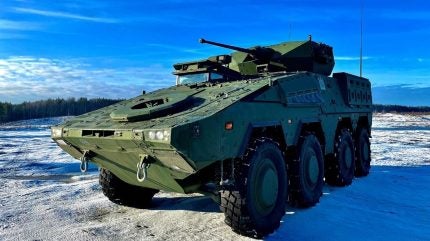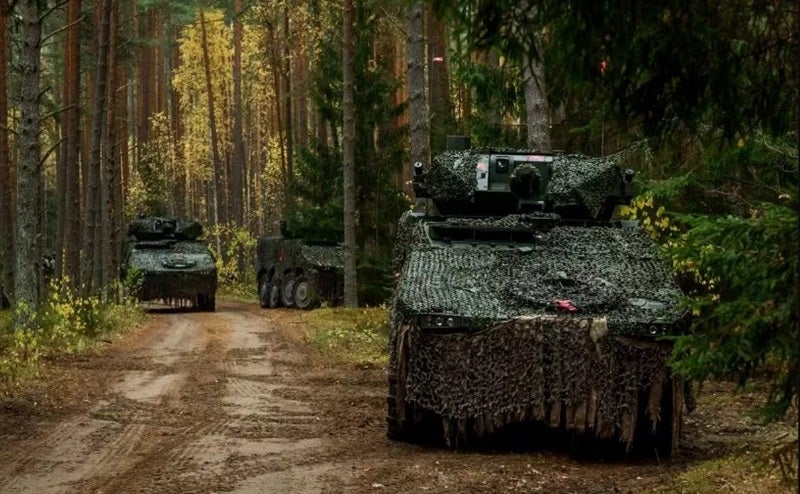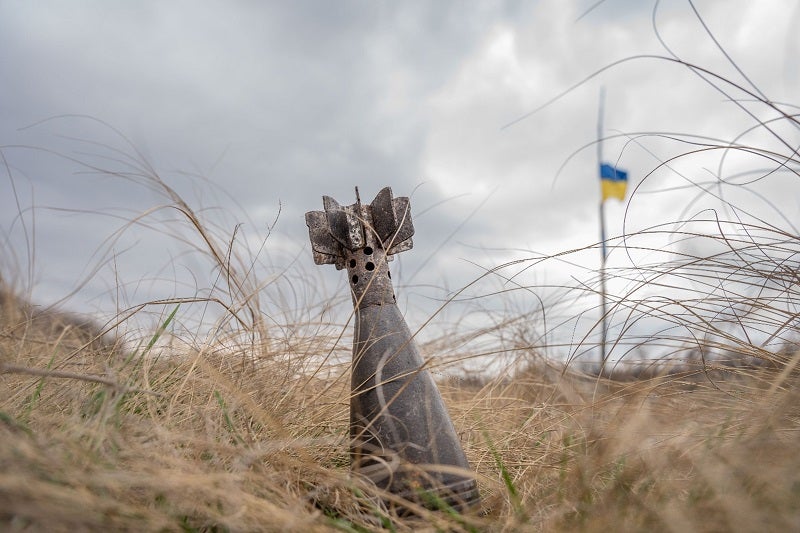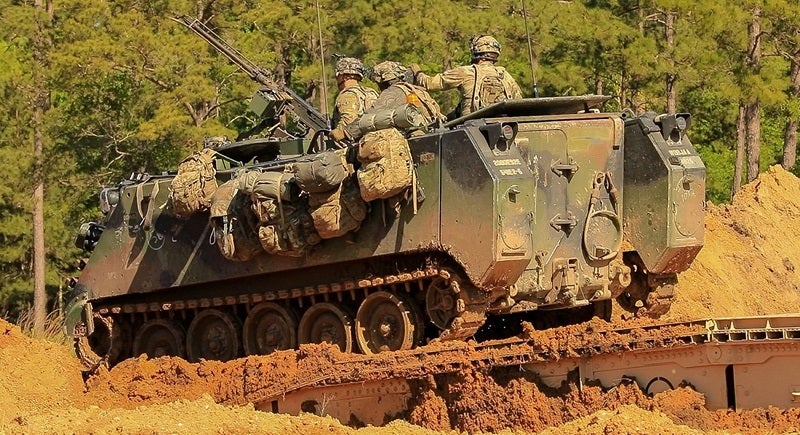
A new batch of Wolves – or ‘Vilkas’, as the 8×8 Boxer vehicle is designated in Lithuania – will enter service with the Baltic State in the coming years.
On behalf of the government, the Organisation for Joint Armament Cooperation (OCCAR), Europe’s defence programme overseer, has ordered 27 more Boxer Infantry Fighting Vehicles (IFVs) in addition to the Army’s existing fleet, currently 91 strong according to GlobalData intelligence.
The amendment itself boosts the nation’s first batch of IFVs by 30%, despite Lithuania quadrupling the number of IFVs it had over the last three years.
The Ministry of National Defence confirmed that the latest order concludes the first phase of the Boxer acquisition which began when Lithuania first received the platform in 2019, after joining the programme in 2016.
Other participating nations include Germany, the Netherlands and the UK. So far OCCAR have ordered more than 1,300 Boxers from the original equipment manufacturer ARTEC, a German joint venture between KNDS and Rheinmetall.
In total, the amendment will cost up to €370m ($402.4m) which also covers supplementary and logistical enablers – spares, maintenance equipment, training courses. The government anticipates these units to arrive between 2027-2029.
Boxer Vilkas
The Vilkas is a platform based on the German Boxer IFV model, according to OCCAR. While 89 units are the baseline configuration, two more are prototype variants.
Each Lithuanian vehicle is equipped with Israeli-made remote weapon station turrets, US-made 30mm Mk-44S cannons and Israel’s Spike long-range anti-tank missiles, as well as other integrated specialised equipment and electronic systems. According to the government, Lithuania is the first operator to incorporate the 30mm gun on a Boxer.

On 24 February 2024, the Vilkas completed a Live Firing Test that effectively marked the close of the nation’s first phase of Boxers, albeit the 27 additional units are part of this batch.
Two batalions in the ‘Iron Wolf’ mechanised infantry brigade operate the armoured vehicle. In January 2024, the former Lithuanian Minister of National Defence, Arvydas Anušauskas, commented:
“The IFVs are now capable of destroying [main battle] tanks and other heavy armoured targets with [Israeli] Spike missiles and [they can also] neutralise smaller, lighter or non-armoured targets with the 30mm cannon at the same time.”
The IFVs are now capable of destroying tanks with Spike missiles and neutralise smaller, lighter targets with the 30mm cannon at the same time.
Arvydas Anušauskas, former Lithuanian Minister of National Defence
Iron Wolf is a core part of the Lithuanian Army, and it forms part of Nato’s collective defence on the alliance’s Eastern Flank against an increasingly belligerent neighbour, Russia, whose two-and-a-half year invasion of Ukraine still hangs in the balance.
Lithuania and Russia share a border that stretches 185 miles in all – including a 14 mile sea border with the Kaliningrad enclave, making the Baltic nation vulnerable on both sides.
Looking ahead
Now that the first batch of Boxers are complete, OCCAR is already starting to look ahead to where it can enhance the Lithuanian fleet further. In that spirit, the European watchdog announced that a new variant will become available in the coming years that will particularly benefit the Eastern European country.
“An engineering variant will be developed and will provide the Lithuanian Army with significantly improved tactical mobility, directly integrating engineering equipment (such as that used for mine clearance) into the existing Lithuanian IFV configuration.”

While it is always important to provide infantry with armoured protection and direct fires for the infantry, it is also vital to enable the vehicle to withstand challenges in the battlespace. Thus, OCCAR are learning lessons from Ukraine when it comes to sustaining a ground vehicle on land littered by mines and other obstacles.
The Russian invasion resulted in the mining of more than 174,000 square kilometres of Ukrainian territory, or more than 28% of the country. Since the invasion began Ukraine has gradually become more responsive to the hidden threat with the help of a Capability Coalition of Western backers.

Leading the way, Lithuania announced its latest commitment of aid to Ukraine which included M113 armoured personnel carriers. User can fit additional armour into the M113, such as a mine protective kit under the hull. The US first delivered this application in 1966 with a newly developed variant of the carrier.
Following suit, another Baltic State, Latvia, gifted the Scimitar CVR(T) vehicles to Ukraine. The seats are protected from mine blasts and the increased space envelope provides comfortable working conditions for the crew.
It is likely that the forthcoming Vilkas engineering module will incorporate a heavier payload capacity to respond to mines.



